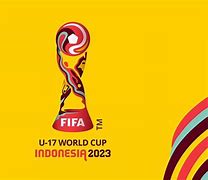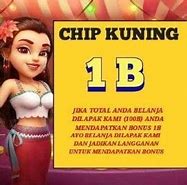
Classification and name origin
The sockeye salmon is the third-most common Pacific salmon species, after pink and chum salmon.[2] Oncorhynchus comes from the Greek ὄγκος (onkos) meaning "barb", and ῥύγχος (rhynchos) meaning "snout". Nerka is the Russian name for the anadromous form.[3] The name "sockeye" is an anglicization of suk-kegh (sθə́qəy̓), its name in Halkomelem, the language of the indigenous people along the lower reaches of the Fraser River (one of British Columbia's many native Coast Salish languages). Suk-kegh means "red fish".[4][5]
The sockeye salmon is sometimes called red or blueback salmon, due to its color.[5] Sockeye are blue tinged with silver in color while living in the ocean.[3] When they return to spawning grounds, their bodies become red and their heads turn green. Sockeye can be anywhere from 60 to 84 cm (2 ft 0 in – 2 ft 9 in) in length and weigh from 2.3 to 7 kg (5–15 lb).[5] Two distinguishing features are their long, serrated gill rakers that range from 30 to 40 in number, and their lack of a spot on their tail or back.[3]
Sockeye salmon range as far south as the Columbia River in the eastern Pacific (although individuals have been spotted as far south as the 10 Mile River on the Mendocino Coast of California) and in northern Hokkaidō Island in Japan in the western Pacific. They range as far north as the Bathurst Inlet in the Canadian Arctic in the east and the Anadyr River in Siberia in the west. The farthest inland sockeye salmon travel is to Redfish Lake, Idaho, over 1,400 km (900 mi) by river from the ocean and 2,000 m (6,500 ft) in elevation.[6] In the United States, populations of sockeye salmon have been extirpated from Idaho and Oregon.
What does sockeye salmon taste like?
Between its texture and flavor, sockeye is one of the boldest species of wild salmon. If you’ve never tasted sockeye salmon before, the first bite of this species might be a pleasant surprise. Its robust flavor and texture are a reflection of its habitat and life cycle, giving you a true taste of nature.
Sockeye has a “salmon-forward” flavor that is bold enough to enjoy on its own or to be paired with intense flavor profiles. This species also has a meaty, dense quality as it is quite lean — but it’s a good source of omega-3 fatty acids.
Sockeye Salmon Research in the Pacific Northwest
Our research on Pacific salmon covers several topics including bycatch, salmon harvest forecasts, ecotoxicology, genetics, marine survival, and responses to climate change.
More on sockeye salmon research in the Pacific Northwest
Dari Wikipedia bahasa Indonesia, ensiklopedia bebas
Salmon sockeye (Oncorhynchus nerka), juga disebut salmon merah, salmon kokanee, salmon blueback, atau sockeye saja, adalah spesies salmon anadrom yang ditemukan di Samudra Pasifik Utara dan sungai-sungai yang bermuara di samudra tersebut. Spesies ini adalah salmon Pasifik yang warna utamanya merah saat pemijahan. Panjangnya bisa mencapai 84 cm (2 kaki 9 inci) dan berat 2,3 hingga 7 kg (5–15 lb). Ikan remaja tetap berada di air tawar sampai mereka siap bermigrasi ke laut, menempuh jarak hingga 1.600 km (1.000 mil). Makanan mereka terutama terdiri dari zooplankton. Salmon sockeye bersifat semelpar, mati setelah bertelur. Beberapa populasi, yang disebut kokanee, tidak bermigrasi ke laut dan menghabiskan seluruh hidupnya di air tawar.
Salmon sockeye adalah spesies salmon Pasifik ketiga yang paling umum, setelah salmon merah muda dan salmon chum. Oncorhynchus berasal dari bahasa Yunani ὄγκος (onkos) yang berarti "duri" dan ῥύγχος (rhynchos) yang berarti "hidung". Nerka adalah nama Rusia untuk bentuk anadromous. Nama "sockeye" adalah versi bahasa Inggris dari nama skeg (sθə́qəy̓) dalam Halkomelem, bahasa penduduk asli di sepanjang hilir Sungai Fraser (salah satu dari banyak bahasa asli Coast Salish di British Columbia ). Suk-kegh yaitu "ikan merah".
Ikan salmon merah yang disebut juga salmon merah atau salmon punggung biru, karena warnanya. Ikan salmon berwarna biru dengan semburat perak saat hidup di laut. Saat mereka kembali ke tempat pemijahan, tubuh mereka berubah menjadi merah dan kepala mereka berubah menjadi hijau. Ikan salmon dapat berukuran panjang 60 hingga 84 cm (2 kaki 0 inci – 2 kaki 9 inci) dan berat 2,3 hingga 7 kg (5–15 pon). Dua ciri yang membedakannya yaitu sisir insangnya yang panjang dan bergerigi yang jumlahnya berkisar antara 30 hingga 40, dan tidak adanya bintik di ekor atau punggungnya.
Ikan salmon sockeye menyebar hingga sejauh selatan Sungai Columbia di Pasifik timur (meskipun beberapa individu telah terlihat hingga sejauh selatan Sungai 10 Mile di Pantai Mendocino California ) dan di utara Pulau Hokkaidō di Jepang di Pasifik barat. Mereka menyebar hingga sejauh utara Bathurst Inlet di Kutub Utara Kanada di timur dan Sungai Anadyr di Siberia di barat. Perjalanan salmon sockeye pedalaman terjauh adalah ke Redfish Lake , Idaho, lebih dari 1.400 km (900 mil) melalui sungai dari laut dan ketinggian 2.000 m (6.500 kaki). Di Amerika Serikat, populasi salmon sockeye telah punah dari Idaho dan Oregon .
Alaskan Salmon menyediakan 3 jenis Salmon Liar, yaitu : sockeye salmon ( salmon merah), coho salmon (salmon merah oren), chum salmon (salmon oren pucat).
Warna salmon alami tidak ada tambahan pewarna atau zat kimia lain nya. Warna salmon berbeda karena semakin merah warna nya,nutrisi nya semakin banyak dan semakin dalam tempat tinggal nya.
• Berat Bersih : 200gr/Pack
• Tanpa Pengawet dan Pewarna
• Ready to eat : dengan metode IQF
• Dikemas rapi secara higienis (Vacuum packed) dan bebas bakteri
- Salmon si raja ikan dari Alaska yang ditangkap setahun sekali kini bisa Anda nikmati di Jakarta.
yang luar biasa gurih dagingnya dan
yang lembut teksturnya diolah oleh sang chef menjadi sajian serba lezat. Nikmati kelezatannya hanya di resto ini!
Ikan salmon menjadi primadona di antara beragam jenis ikan laut karena kandungan nutrisinya. Asam lemak omega 3 yang sangat baik untuk jantung merupakan nutrisi utama pada ikan salmon. Demikian juga dengan dua jenis ikan salmon Alaska yang ternama,
Sockeye salmon sering disebut
merujuk pada kulitnya yang berwarna merah oranye dengan guratan biru tua di bagian atasnya. Sesuai dengan namanya 'sockeye' yang artinya 'merah', daging ikan salmon ini berwarna oranye kemerahan. Tekstur dagingnya lebih kenyal dibandingkan salmon lain karena
bermigrasi paling jauh. Bisa ditangkap di Hokaido, Jepang hingga sungai Columbia Oregon dan paling banyak ditangkap di Bristol Bay, Alaska.
SCROLL TO CONTINUE WITH CONTENT
Yang paling menonjol rasa daging salmon ini yang sangat istimewa. Kenyal gurih seperti daging kepiting. Meskipun tidak terlalu berminyak namun sockeye salmon paling terasa kuat gurih salmonnya. Karenanya diperlukan teknik memasak yang jitu agar rasa gurih alaminya tidak rusak.
yang dikenal dengan nama
berukuran sedang dengan warna keperakan. Warna dagingnya oranye seperti umumnya salmon tetapi tidak kemerahan seperti sockeye salmon.
Daging coho salmon tidak terlalu berminyak dan teksturnya tidak terlalu keras meskipun rasanya gurih lembut. Karenanya jenis salmon ini paling banyak dimakan mentah atau diasap sehingga cita rasa alaminya tetap terjaga. Kedua jenis salmon liar dari Alaska ini selain kaya akan asam lemak omega 3 juga mengandung DHA dan EPA yang penting untuk kinerja otak. Karenanya untuk pengolahannya harus cermat agar kandungan nutrisi penting ini tidak hilang.
Ingin mencicipi kedua salmon Alaska ini? Mampir saja ke RIVA, French Restaurant yang berlokasi di lantai dasar The Park Lane Jakarta. Sepanjang bulan Oktober ini
akan mengolah kedua jenis salmon dengan teknik yang paling tepat.
Pemasakan dengan panas sedang di atas wajan atau pan seared merupakan salah satu teknik yang akan dipakai sang chef. Selain itu daging sockeye salmon dan coho salmon yang sedikit berminyak paling cocok di
setengah matang. Sajian ini akan dilengkapi dnegan saus
yang wangi dan menjadi paduan istimewa kelembutan tekstur ikan salmon.
Nah, inilah saat tepat memanjakan lidah dengan sajian langka dan istimewa. Jangan ragu untuk mencicipi ikan salmon yang kaya nutrisi ini. Segera saja hubungi
atau layangkan mail ke :
There are key differences between Atlantic salmon vs sockeye salmon that give each species its unique nutritional profile, flavor, and appearance. These qualities are a direct result of how and where each spends its life, reflecting the complexity of nature and the limitations of human intervention through finfish aquaculture.
Wild sockeye salmon develop their robust qualities in a vast marine ecosystem, swimming thousands of miles over a lifetime in an epic hunt for food. This is in stark contrast to farm-raised Atlantic salmon, who are typically confined to a net pen — often situated in polluted, coastal waters — where they’re fed engineered pellets that can never truly replace a wild diet.
Sockeye Salmon Research in Alaska
Our work to forecast salmon harvests, assess the impact of commercial fisheries on salmon, and evaluate how salmon populations respond to environmental changes enable us to estimate abundance and trends for sockeye salmon in Alaska.
Learn more about salmon research in Alaska
What is Atlantic salmon?
When you’re at the store, any fish that’s being marketed as Atlantic salmon is farmed Atlantic salmon. That’s because Atlantic salmon are an endangered species in the wild, with limited habitats in Maine as well as Canadian tributaries in the North Atlantic. Wild Atlantic salmon cannot be harvested by fishermen or sold in markets as scientists attempt to restore historical runs and rehabilitate wild Atlantic salmon populations.
Farmed Atlantic salmon are produced in aquaculture farms around the world, accounting for nearly 70 percent of the salmon market. While salmon aquaculture is a massive industry, it comes at the price of conservation issues that impact wild salmon populations and the fragile ecosystems that surround open-net salmon pens.
For example, the implosion of a net pen in Puget Sound in 2017 finally prompted the state government to ban Atlantic salmon farming in state-owned waters. Whether we’re considering Atlantic salmon vs Pacific salmon species, finfish farming in the open seas is so problematic that it’s also currently banned in Alaska, Oregon, and California.
In terms of taste and appearance, farmed Atlantic salmon have a less robust flavor profile than sockeye and are paler in color, owing to farmed salmon’s engineered diet. The feed is often made up of fish oil and other supplements like corn or soy. This diet lacks the krill and zooplankton that are part of salmon’s dietary needs, affecting both the color and nutritional profile of farmed Atlantic salmon.
The sockeye salmon (Oncorhynchus nerka), also called red salmon, kokanee salmon, blueback salmon, or simply sockeye, is an anadromous species of salmon found in the Northern Pacific Ocean and rivers discharging into it. This species is a Pacific salmon that is primarily red in hue during spawning. They can grow up to 84 cm (2 ft 9 in) in length and weigh 2.3 to 7 kg (5–15 lb). Juveniles remain in freshwater until they are ready to migrate to the ocean, over distances of up to 1,600 km (1,000 mi). Their diet consists primarily of zooplankton. Sockeye salmon are semelparous, dying after they spawn. Some populations, referred to as kokanee, do not migrate to the ocean and live their entire lives in fresh water.
Engage Youth with Sailors for the Sea
Oceana joined forces with Sailors for the Sea, an ocean conservation organization dedicated to educating and engaging the world’s boating community. Sailors for the Sea developed the KELP (Kids Environmental Lesson Plans) program to create the next generation of ocean stewards. Click here or below to download hands-on marine science activities for kids.
Additional Resources:
NOAA Fisheries conducts various research activities on the biology, behavior, and ecology of sockeye salmon. The results of this research are used to inform management decisions for this species. Sockeye salmon have not been assessed.
Is Atlantic salmon dyed?
Farmed Atlantic salmon get their color from feed that is enhanced with dyes. These dyes are derived from a carotenoid called astaxanthin. Since farmed Atlantic salmon are primarily fed corn and soy, astaxanthin must be added to the feed to give the salmon a pink color. If farmed Atlantic salmon were not fed these dyes, they would be gray — which isn’t marketable to consumers, because we wouldn’t be able to recognize these fillets as salmon. When buying feed, farmers actually use a color wheel to determine what hue they want their salmon to be when they mature.
It’s important to note that astaxanthin is naturally found in shrimp and krill in the wild, and it is what gives wild sockeye their color, too. However, some salmon farms use synthetically derived astaxanthin to ensure that Atlantic salmon appears pink enough by the time they go to market.
What does Atlantic salmon taste like?
Farmed Atlantic salmon doesn’t pack the same punch as sockeye salmon. It is significantly less flavorful. Farmed Atlantic salmon is also much higher in fat.
The diet of farmed Atlantic salmon gives them an overabundance of omega-6 fatty acids. This is unnatural for the species, who become bloated and stressed. These characteristics result from their diet of pellets — typically engineered from soy and corn — which is deficient in the nutrients from the wild that give sockeye its rich qualities. These pellets are often supplemented with fish oils, but not nearly enough to match the fat ratios of a wild diet.
The fat profile of farmed Atlantic salmon can also be problematic for the humans who eat this fish on a regular basis. Diets with an excess of omega-6 fatty acids are associated with a higher risk of chronic illnesses. In contrast, diets that have higher ratios of omega-3 fatty acids (featuring foods like sockeye salmon) may lead to healthier outcomes.
Health Benefits of Sockeye vs. Atlantic Salmon
When it comes to wild Alaskan sockeye vs. Atlantic salmon, sockeye is healthier across several considerations.
Due to a diet rich in krill, plankton, and small fish, wild salmon are naturally a good source of omega-3 fatty acids that can help stave off oxidative stress and support heart health. This diet is the reason why salmon are pink or red, indicating the presence of an antioxidant called astaxanthin. When wild salmon have access to clean ecosystems like those in Alaska fisheries, they’re also low in contaminants, meaning they’re a healthy and safe source of protein that anyone can include in their diet on a regular basis.
Because farmed salmon don’t have access to a wild diet, they are often fed soy-and-corn-based feed that must be supplemented with omega-3s and synthetic antioxidants. Without this supplementation, farmed salmon would naturally be deficient in omega-3s and appear a shade of gray, rather than pink or red.
Notably, farmed atlantic salmon, as well as wild sockeye sourced from the Pacific Northwest, can contain elevated levels of PCBs, dioxins, and pesticides, which have been associated with adverse health effects in humans. Infants, children, and women of child-bearing age are especially advised to limit their consumption of seafood with elevated levels of these toxins in order to protect their health.



